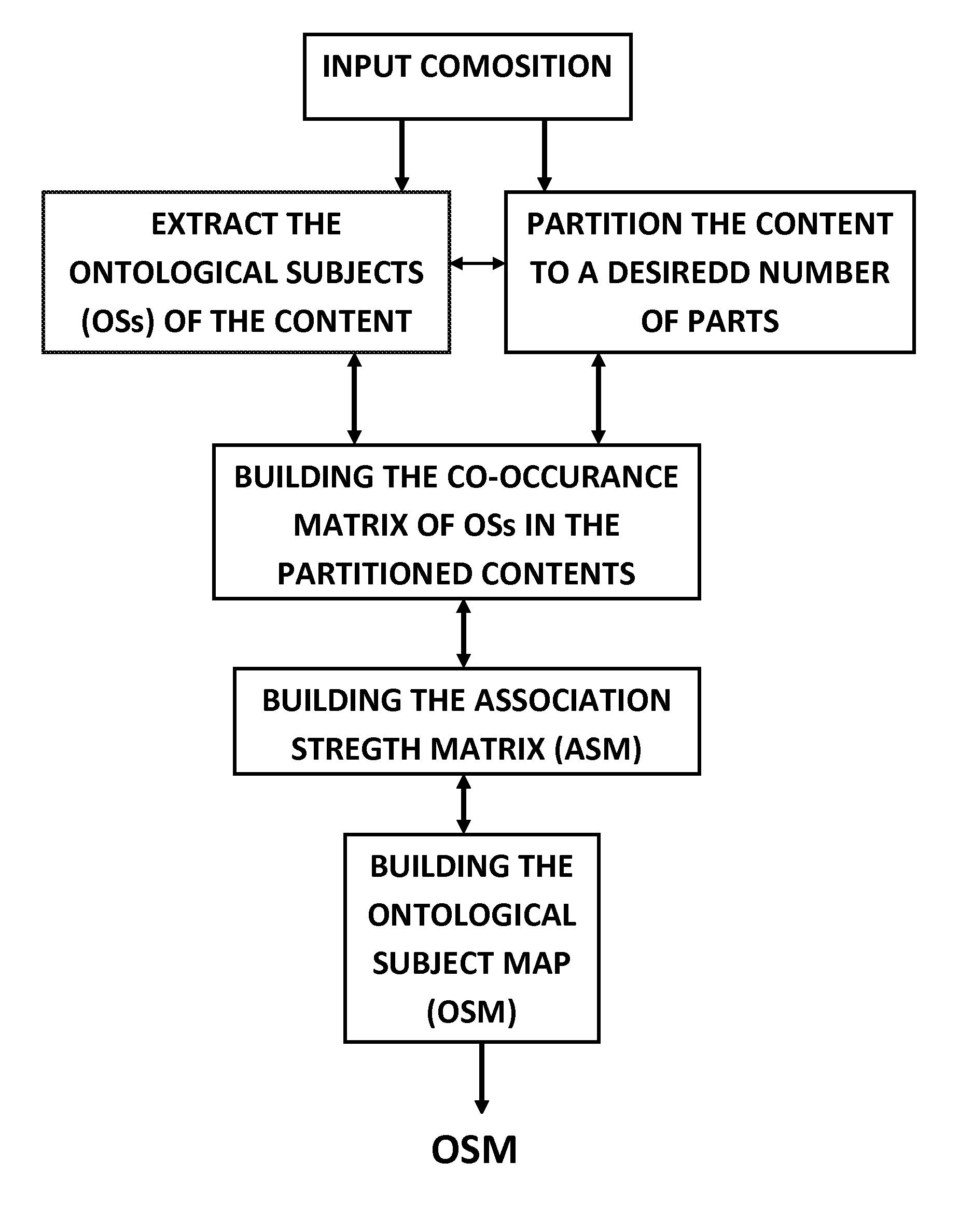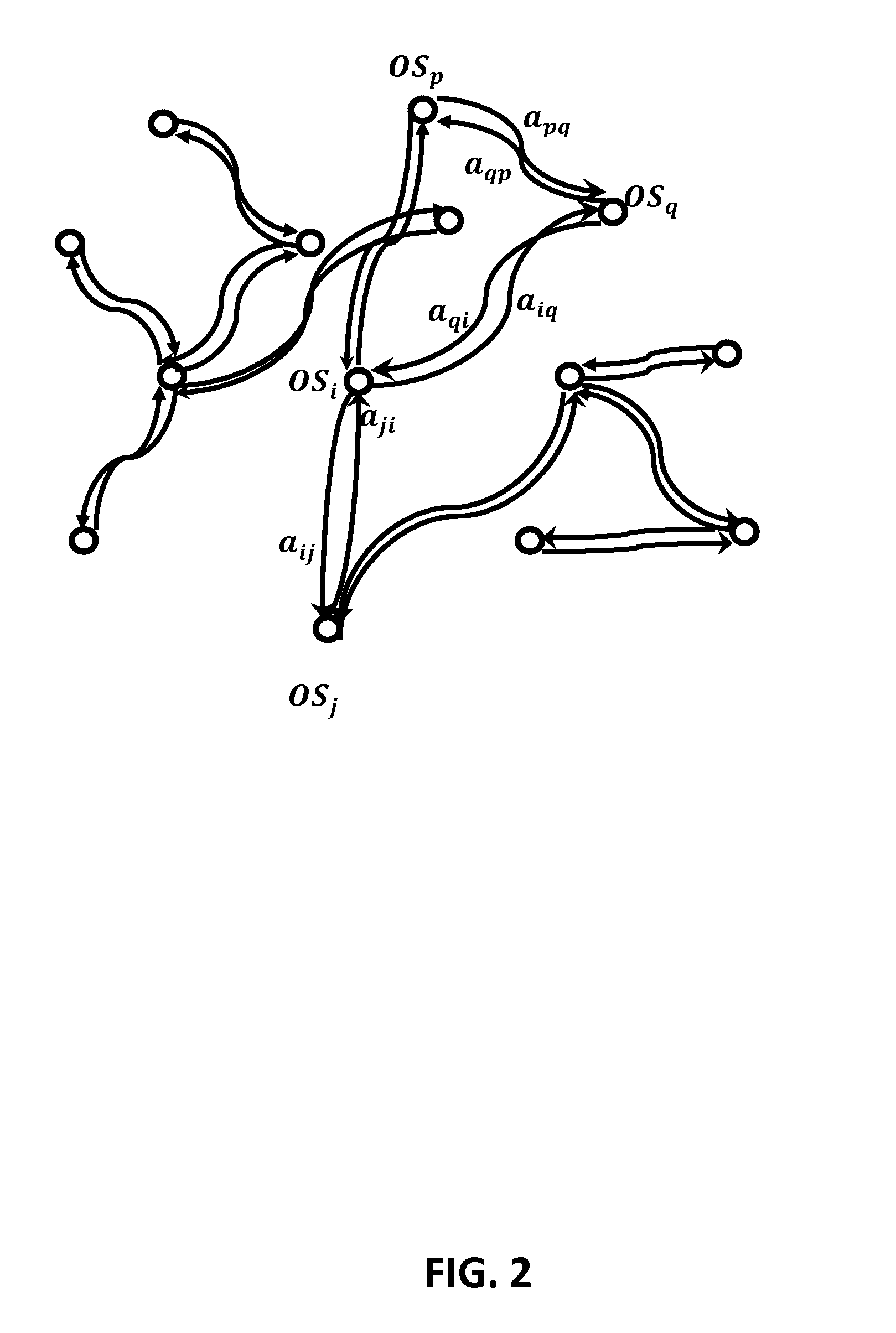Methods for determining context of compositions of ontological subjects and the applications thereof using value significance measures (VSMS), co-occurrences, and frequency of occurrences of the ontological subjects
a technology of ontological subjects and context, applied in the field of information processing, ontological subject processing, knowledge retrieval, knowledge retrieval, etc., can solve the problems of large body of knowledge that cannot be easily identified by humans, large amount of knowledge is unstructured, and is unclear for non-experts in the field
- Summary
- Abstract
- Description
- Claims
- Application Information
AI Technical Summary
Benefits of technology
Problems solved by technology
Method used
Image
Examples
Embodiment Construction
[0048]In order to describe the disclosure in details we first define a number of terms that are used frequently throughout this description. For instance, the information bearing symbols are called Ontological Subjects and are defined herein below, along with others terms, in the definitions sections.
I—DEFINITIONS
[0049]This disclosure uses the definitions that were introduced in the U.S. patent application Ser. No. 12 / 755,415 filed on Apr. 7, 2010, which is incorporated as a reference, and are recited here again along with more clarifying points according to their usage in this disclosure and the mathematical formulations herein.
I—Definitions
[0050]1. Ontological Subject: symbol or signal referring to a thing (tangible or otherwise) worthy of knowing about. Therefore Ontological Subject means generally any string of characters, but more specifically, characters, letters, numbers, words, bits, mathematical functions, sound signal tracks, video signal tracks, electrical signals, chemic...
PUM
 Login to View More
Login to View More Abstract
Description
Claims
Application Information
 Login to View More
Login to View More - R&D
- Intellectual Property
- Life Sciences
- Materials
- Tech Scout
- Unparalleled Data Quality
- Higher Quality Content
- 60% Fewer Hallucinations
Browse by: Latest US Patents, China's latest patents, Technical Efficacy Thesaurus, Application Domain, Technology Topic, Popular Technical Reports.
© 2025 PatSnap. All rights reserved.Legal|Privacy policy|Modern Slavery Act Transparency Statement|Sitemap|About US| Contact US: help@patsnap.com



